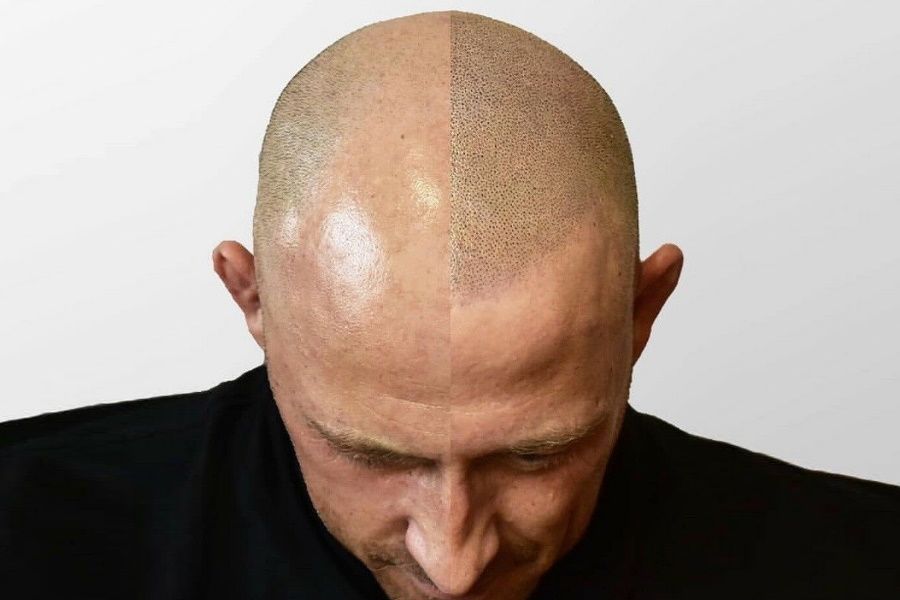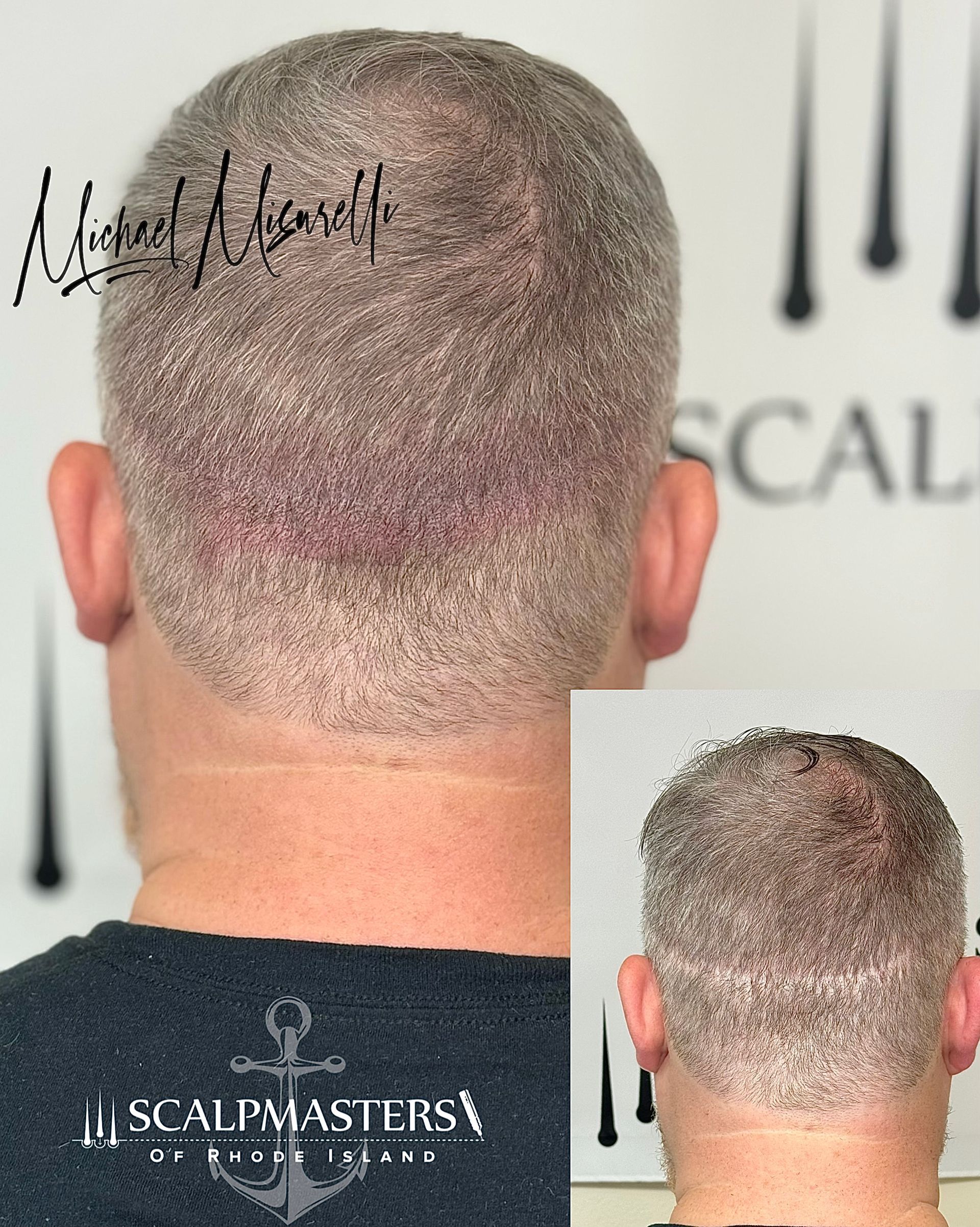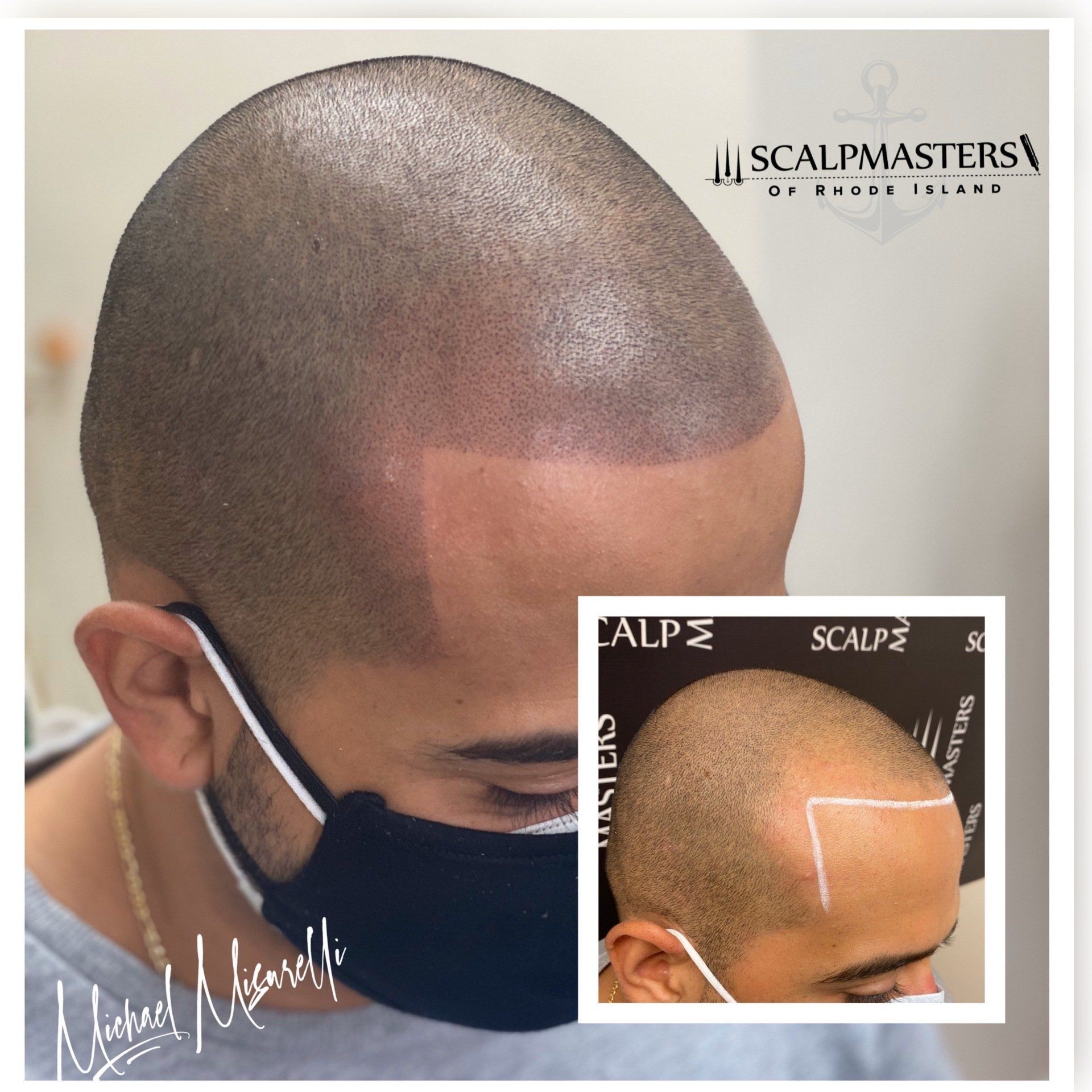How To Stop a Receding Hairline For Women
How To Stop a Receding Hairline For Women
A receding hairline is a common concern that affects both men and women. It's more than just an aesthetic issue; it can significantly impact self-esteem and confidence. As people search for ways on how to stop a receding hairline, the plethora of information can be overwhelming. Now, we will provide a comprehensive guide on understanding, identifying, and addressing receding hairlines effectively.
What Is a Receding Hairline?
A receding hairline refers to the gradual loss of hair, primarily starting from the forehead and moving backward. It's often the first sign of male pattern baldness, but it can also affect women. The change is usually slow, taking years to become noticeable, making early detection and intervention crucial.
For many, it's a natural part of aging, but not everyone experiences it to the same degree. Genetics play a significant role, meaning if your family members have receding hairlines, you might, too. While it's often associated with men, women with receding hairline issues also seek solutions, albeit with unique considerations.
Where Does Hairline Thinning Come From?
Hairline thinning or a bad hairline often stems from androgenetic alopecia, a hereditary condition. It affects hair follicles, making them shrink and produce thinner, shorter hairs until they stop producing hair entirely. Another cause, especially among women, is traction alopecia, resulting from tight hairstyles that pull at the roots.
External factors, such as stress, poor nutrition, or certain medical conditions, can also accelerate hairline thinning. Understanding the root cause is vital to choosing the right hair loss treatments and preventing further hairline recession.
The Most Common Signs of a Receding Hairline
One of the first signs is a change in the hair's shape at the temples, which might form an 'M' shape. As hairs fall and the recession progresses, the hair at the middle of the forehead might also begin to thin. Over time, without intervention, this can lead to a more pronounced 'U' shape.
While it's natural to lose some hair daily, an increase in hairs on your pillow, brush, or shower drain can indicate a problem. It's crucial to monitor these changes and seek advice if you're concerned. Women, although less commonly affected, might notice a broader parting or thinning at the hair's front.
What Are the Treatment Options for a Receding Hairline?
Topical minoxidil is a popular over-the-counter treatment known to stimulate hair growth. It's available in liquid or foam forms and has shown efficacy for both men and women. However, it's crucial to note that stopping its use can reverse any gains, and some users report side effects.
Hair transplants, on the other hand, offer a more permanent solution. They involve taking hair from denser areas and transplanting it to areas with thinning hair. The procedure has advanced significantly, ensuring natural-looking results, but it can be costly and might not be suitable for everyone.
What Makes a Receding Hairline Different for Women?
Receding hairline women experience is often subtler than in men. It's generally characterized by broadening of the part or thinning around the temples. The causes can range from hormonal changes, especially during menopause, to traction alopecia from tight hairstyles.
Additionally, medical conditions like polycystic ovary syndrome (PCOS) can lead to hair thinning in women. It's essential for women to consult with a dermatologist or trichologist to get a correct diagnosis and tailored receding hairline treatments.
How Can Scalp Micropigmentation Help a Receding Hairline?
Scalp micropigmentation (SMP) is an innovative solution that involves tattooing tiny dots onto the scalp to mimic the appearance of hair follicles. This non-invasive procedure creates an illusion of density, making the hair look fuller and addressing the visual effects of a receding hairline.
While it doesn't promote hair growth, it's an excellent option for those looking for an immediate solution without the side effects associated with other treatments. Scalpmasters of Rhode Island specializes in SMP, ensuring realistic results tailored to individual needs.
For those wary of surgeries or resistant to medications, SMP provides a long-lasting solution. It's also suitable for those who've undergone hair transplants and want to enhance their results further.
The Advantages of Scalp Micropigmentation
Scalp Micropigmentation (SMP) is rapidly emerging as a sought-after solution for hair loss. Its non-invasive nature, combined with its immediate results, has made it a favorite among those battling hair thinning and receding hairlines.
- Immediate Results: Unlike many hair growth treatments, SMP offers visible results from the very first session. Individuals can walk out with a fuller-looking scalp, significantly boosting their confidence.
- Cost-Effective in the Long Run: Though the upfront cost might seem significant, SMP often turns out to be more economical over time when compared to continuous treatments like topical solutions or pills.
- Low Maintenance: Once the sessions are complete, SMP requires minimal upkeep. There's no need for special shampoos or additional products, making it a hassle-free solution.
- Long-Lasting Effects: With proper care, the effects of SMP can last for several years. This longevity reduces the need for frequent touch-ups or revisions.
- Natural Appearance: Skilled practitioners ensure that the pigmentation matches the individual's natural hair color and blends seamlessly. This ensures the results mimic natural hair follicles, creating a believable density.
- Safe Procedure: SMP doesn't involve incisions or surgeries, drastically reducing the risk of complications. Plus, there's no downtime, so individuals can return to their daily activities immediately.
In the journey to combat hair loss, SMP stands out as an innovative and effective approach. Its blend of aesthetic appeal, durability, and safety makes it an optimal choice for many seeking to regain a fuller-looking scalp.
Rely on Scalpmasters of Rhode Island for Help With Receding Hairlines
Addressing a receding hairline is not just about aesthetics; it's about regaining confidence. Scalpmasters of Rhode Island is dedicated to providing expert solutions, guidance, and treatments tailored to individual needs. With a team of seasoned professionals, we’re equipped to offer advice, treatments, and support at every stage of your hair journey.
Don't let a receding hairline define you. With the right interventions and expert guidance, you can reclaim your confidence and stride forward with pride. Give us a call today to schedule an appointment.
Learn More
What's New
Latest Hair Loss Solutions & Guides




